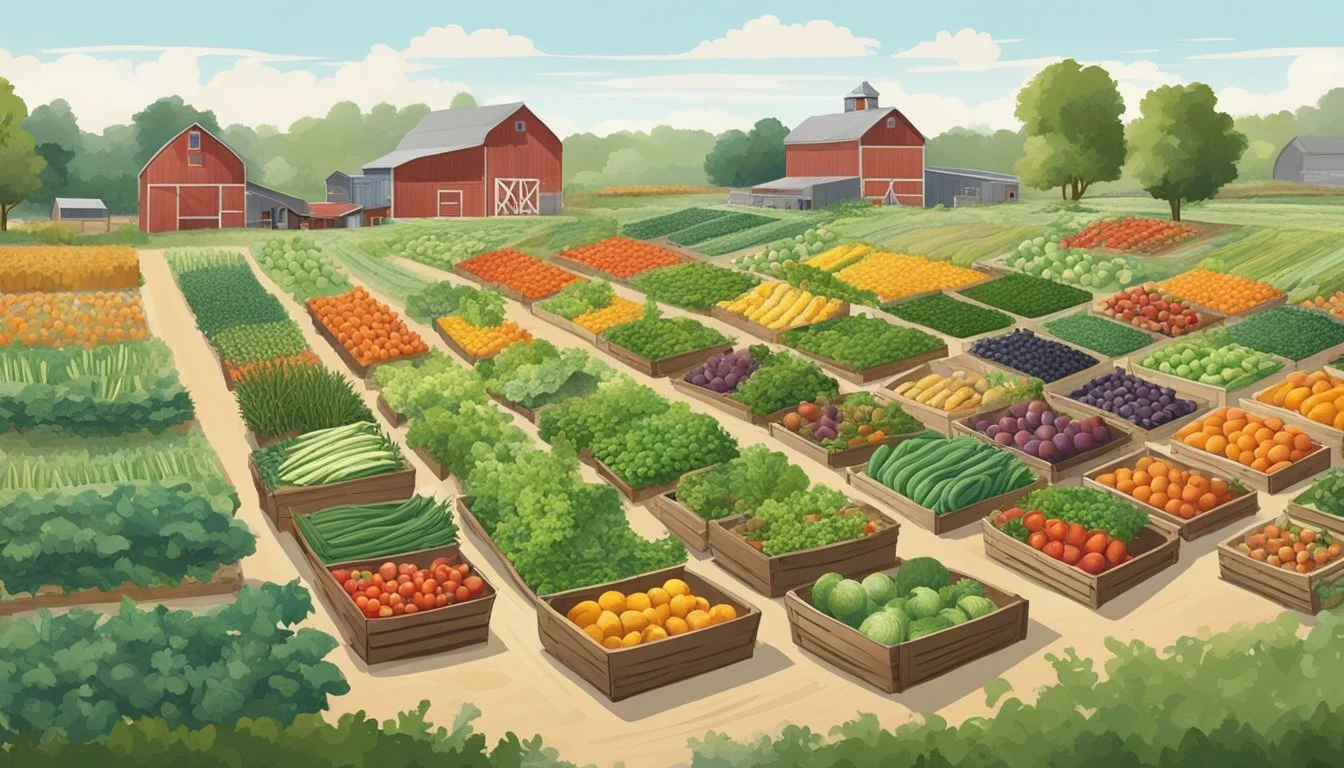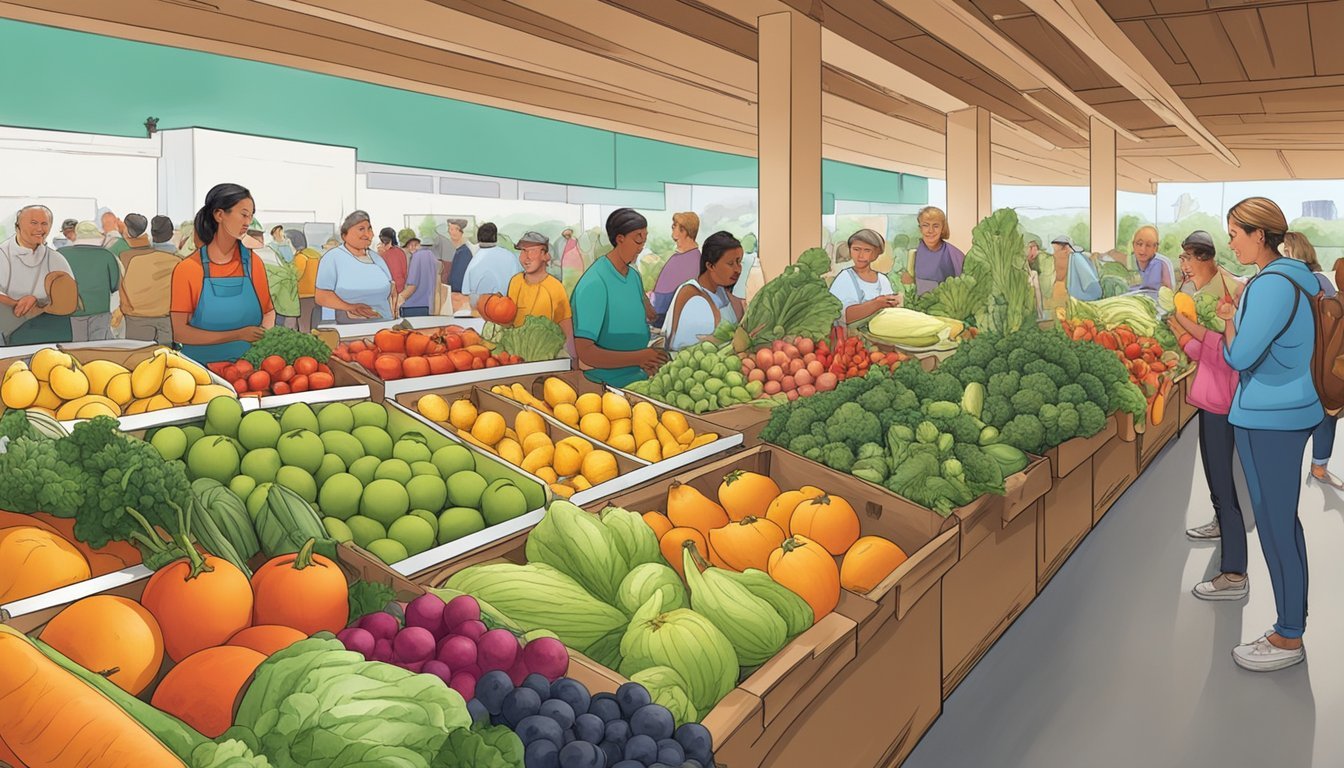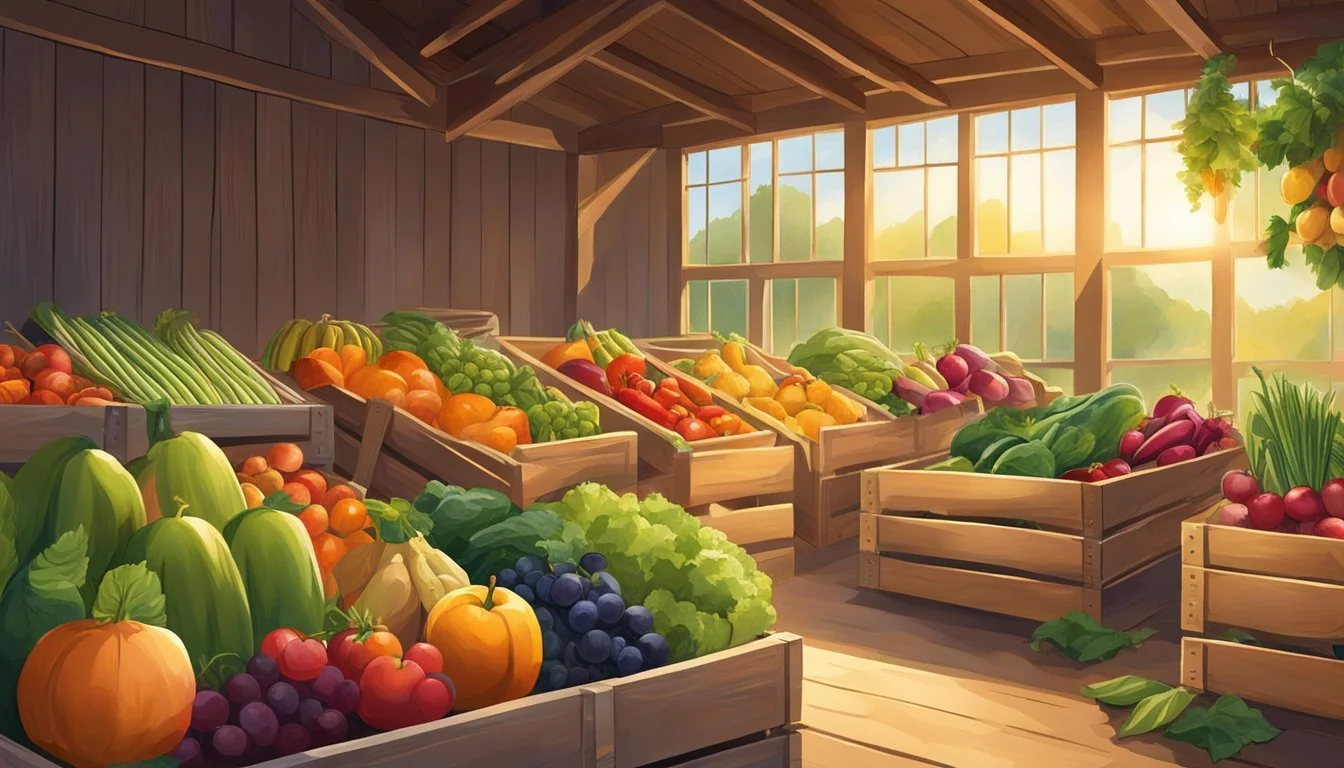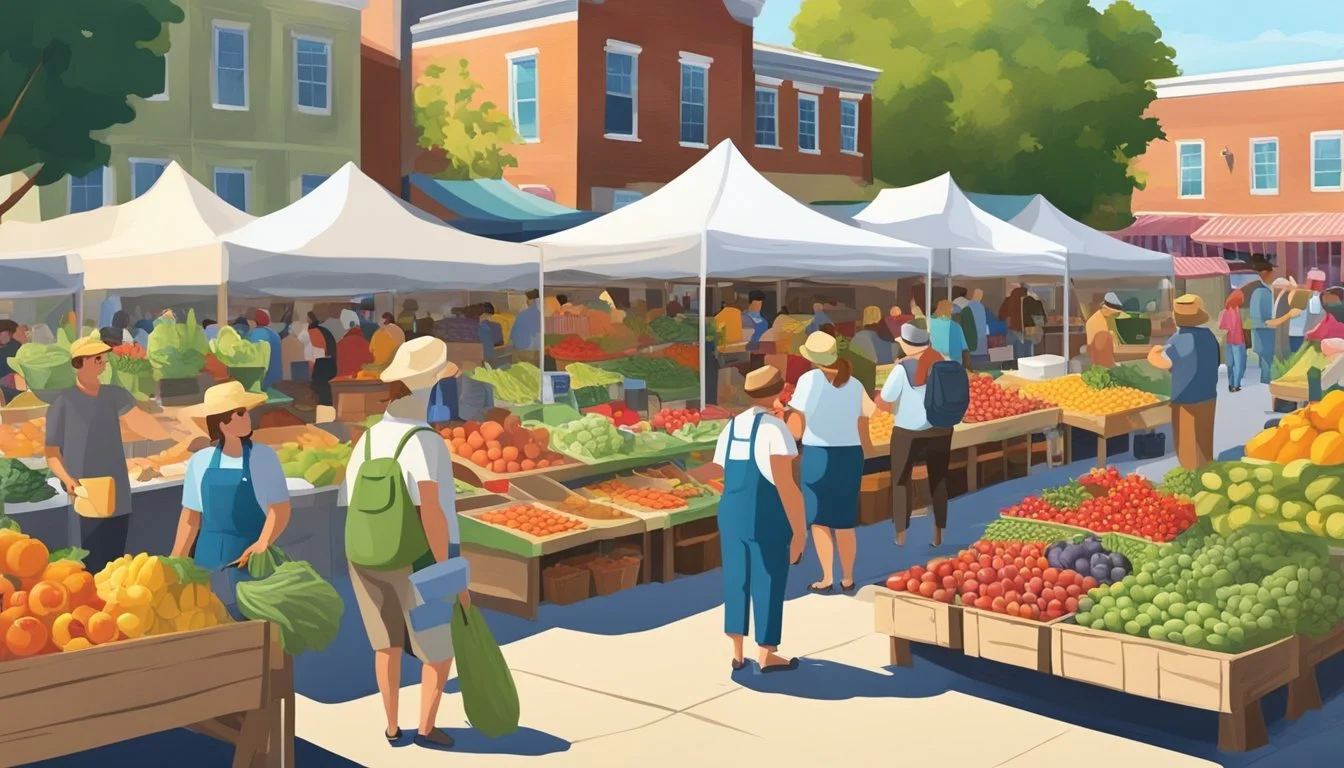Community Supported Agriculture (CSA) in Ohio
A Guide to Local Produce and Farms
Community Supported Agriculture, commonly known as CSA, has established itself as a valuable and sustainable part of Ohio's agricultural landscape. It connects consumers directly to their local farms, allowing them to purchase seasonal produce and other farm products through a subscription-based model. This relationship not only fosters community engagement but also encourages a stable economic environment for farmers who receive upfront payment to cover anticipated costs of farm operation.
In Ohio, a multitude of CSA options are available, catering to a diverse range of consumer preferences. These programs often vary by structure, with some offering pay-as-you-go models while others follow the traditional approach where members pay upfront for a season's worth of farm products. Such arrangements provide consumers with a regular supply of fresh, locally-grown food, and offer a tangible way for individuals to support sustainable agriculture and contribute to the local economy.
Ohio's CSA programs typically operate during the harvest season, providing a weekly bounty that may include not just vegetables, but also fruits, meats, and other products, depending on the farm's offerings. Consumers can enjoy the freshest possible produce and gain a closer connection to the source of their food, while farmers benefit from a guaranteed market for their goods. This symbiotic relationship underscores the essence of CSA – a shared commitment to quality, sustainability, and the well-being of the local community.
Understanding CSA
Community Supported Agriculture (CSA) is an innovative model of food production and distribution that directly connects farmers and consumers. Through CSA, members invest in a farm's growing season and in return receive a share of the harvest, fostering a mutually beneficial relationship and shared responsibility.
History and Principles
The concept of CSA originated in Japan in the 1960s with the term “teikei” meaning "cooperation" or "partnership." It then spread to Europe and eventually took root in the United States in the 1980s. CSA is grounded in the principles of community involvement, education, shared risk, and the relationship between farmer and consumer. It's more than a business agreement; it's a commitment to support local agriculture and to understand the seasonal rhythms of food production.
Community Involvement: Encourages local households to become integral stakeholders in the farming process.
Education: Provides a path for consumers to learn about agriculture and sustainable practices.
Shared Risk: Members share in the farmer's risk, understanding that crop yield can be affected by many variables.
Relationship: Fosters a closer link between farmer and consumer.
How CSA Models Work
CSA functions on a simple premise: members purchase shares of a farm's anticipated harvest prior to the growing season. They then receive periodic distributions of the farm’s produce throughout that season. There are various structures of CSA models:
Traditional or Subscription-Based CSA: Members pay upfront for the entire season.
Flexible or Market-Style CSA: Members can choose their produce and often pay throughout the season.
Regardless of the model, the goal is the same: to support the farm's operating expenses at the start of the season, allowing farmers to focus on quality food production. Membership creates a direct relationship between the community and the farm, offering educational opportunities about where and how food is grown. The shared risk is an important aspect, as members become co-producers, experiencing the effects of weather and growing conditions alongside the farmer.
Benefits of CSA
Community Supported Agriculture (CSA) programs in Ohio present a model for food distribution that offers tangible benefits to participants and the environment. This section delves into the various advantages experienced by consumers, farmers, and society at large when engaging with CSA programs.
Benefits to Consumers
Consumers benefit from CSAs by receiving fresh produce that is often organic and nutrient-dense. By investing in a local farm's CSA, they typically have access to an abundance of seasonal food while supporting sustainable agriculture practices. Participating in CSA also promotes mindfulness about food origins and cultivates a stronger connection to the community.
Access to Fresh Produce: Consumers enjoy seasonally fresh, flavorsome fruits and vegetables.
Healthier Choices: A steady supply of nutrient-dense food encourages a healthier diet.
Benefits to Farmers
Farmers gain financial stability through pre-season capital. CSAs provide upfront payments, which contribute to covering initial costs for seeds and equipment. This model also fosters direct relationships with consumers, creating a loyal customer base and reducing marketing costs.
Financial Security: Upfront payments for CSA shares help with early-season cash flow.
Reduced Marketing Costs: Direct distribution to consumers lowers the need for advertising.
Environmental and Social Impacts
CSAs contribute to sustainable and organic farming practices by reducing the carbon footprint associated with long-distance transportation of food. They encourage a closed-loop system of agriculture that benefits the local ecosystem. Moreover, CSAs strengthen community ties by bringing together individuals with shared values towards food and environmental stewardship.
Reduced Carbon Footprint: Local distribution means less transport-related emissions.
Enhanced Community Connectivity: CSA programs create social networks centered around healthy food and sustainable living.
Joining a CSA in Ohio
Community Supported Agriculture (CSA) offers individuals in Ohio the opportunity to engage directly with local farms, providing financial support through memberships that offer weekly shares of fresh produce. This model strengthens the connection between consumers and their food sources.
Finding a CSA
Ohio residents seeking to join a CSA have diverse options to consider. One can search for local CSAs through platforms like LocalHarvest, or explore resources such as the "2024 CSA and Farm Share Guide" published by Edible Ohio Valley. Farmers markets also serve as a hub where consumers can meet local farmers offering CSA memberships.
Membership and Costs
CSA memberships typically require payment up front which aids the farmers with initial costs like seeds and equipment. This subscription is either a one-time fee covering the entire season or, in some cases, a pay-as-you-go system. For example, the Produce Buying Club at Ohio University allows for such a flexible arrangement. Costs can vary based on the farm and the type of share one subscribes to.
What to Expect
Subscribers to a CSA can expect a variety of seasonal food, commonly packaged as weekly boxes of vegetables with the possibility of including other farm products. As noted by the Crown Point Ecology Center, a CSA share often contains the freshest vegetables harvested each week. A working share may be available, where members contribute labor in exchange for produce. This not only fosters community ties but also offers a hands-on agricultural experience.
Seasonal Produce in Ohio
In Ohio, Community Supported Agriculture (CSA) programs offer an array of fresh produce that varies with the seasons. Subscribers to CSAs can expect to see a change in their weekly shares as the calendar shifts from the vibrant growth of spring to the hearty yield of autumn.
Spring and Summer Harvest
Spring in Ohio is a time for the emergence of leafy greens such as lettuce, kale, and chard. Farmers also start harvesting herbs like parsley and cilantro. As the weather warms, the selection broadens:
Berries: Strawberries ripen first, followed by blueberries.
Vegetables: A variety of vegetables like snap peas, beans, broccoli, and carrots become available.
Entering summer, CSA shares often include a diverse mix of vegetables and fruits. Ohioans can enjoy a bountiful supply of:
Tomatoes: From heirloom varieties to cherry tomatoes.
Peppers: Bell peppers of various colors, and hotter varieties.
Cucumbers: Ideal for fresh salads or pickling.
Greens: Romaine, arugula, and more continue to flourish.
Fall and Winter Crops
As the climate cools, Ohio's local produce shifts focus to crops that can withstand colder temperatures. Fall and winter crops typically include:
Root Vegetables: Such as beets, garlic, and onions.
Winter Squash: Varieties like butternut, acorn, and spaghetti squash stand out in the harvest.
Greens: Hardy greens like kale and collards often survive the frost.
Farmers employ season extension techniques to ensure continued availability of lettuce and even some herbs into the winter months. Late in the year, CSA subscribers receive more storage crops that can last throughout the colder period.
Organic and Heirloom Varieties
Community Supported Agriculture (CSA) in Ohio caters to consumers seeking certified organic produce and exotic heirloom varieties. These offerings are distinct in their cultivation techniques and seed lineages, providing a rich tapestry of taste and tradition.
Certified Organic Farms
Certified organic farms have met rigorous standards to ensure their produce is grown without synthetic fertilizers, pesticides, or genetically modified organisms. Farms undergo annual inspections to maintain their certification. These farms contribute to environmental sustainability and offer organic vegetables that meet the preferences of health-conscious consumers.
Crown Point Ecology Center has been certified organic since 1994. Each summer, they offer a diverse selection of vegetables through their CSA program.
Growing Heirloom Varieties
Heirloom varieties refer to plants that have a history of being passed down within a family or community, each with unique colors, flavors, and stories. They are grown from seeds that have not been genetically modified, maintaining traditional cultivation practices.
Laughing Frog Farm specializes in heirloom fruits and vegetables. They provide CSA shares that include not just vegetables, but also heritage breed pigs, chickens, and ducks.
By embracing organic and heirloom selections, Ohio's CSA farms showcase a commitment to quality and sustainable agriculture.
Community Involvement
Community Supported Agriculture (CSA) in Ohio not only bridges the gap between consumers and local farms but also actively fosters community involvement through volunteering opportunities and educational programs. These initiatives are vital for the growth of sustainable agriculture and the education of future generations on the importance of supporting local food systems.
Volunteering Opportunities
Ohio's CSA farms offer an assortment of volunteer opportunities that encourage community members to contribute to the farming process. These opportunities often include tasks such as planting, weeding, harvesting, and packing CSA shares. Community involvement through volunteering allows individuals to gain hands-on experience in sustainable farming practices. It can vary from single-day commitments to regular weekly schedules, accommodating a range of interest levels and availability.
Example opportunities include:
Gerry's Garden: A commitment to sustainable methods, welcomes volunteers to assist with their produce, which is shared with up to twenty CSA members over a thirteen-week period.
Crown Point Ecology Center: Engages volunteers in their week-to-week harvest, sharing the results of organic practices that have been in place since 1994.
Educational Programs
CSAs in Ohio commonly partner with educational entities, like the Ohio State University Extension, to offer programs that enlighten both adults and children about agriculture and nutrition. These programs can range from workshops on organic farming practices to classes on preparing fresh produce. Educational programs are integral in fostering an understanding of food origins and healthy eating habits among community members of all ages.
Programs often include:
Youth Education: Activities designed for kids, such as farm tours and school gardening projects, aiming to instill an appreciation for agriculture early on.
Adult Learning: Workshops such as cooking demonstrations or sustainable farming techniques, often offered through collaborations with local educational institutions like Ohio State University Extension.
Local Food Movement in Ohio
In Ohio, the local food movement gains momentum through the support for Community Supported Agriculture (CSA) and initiatives bolstering local growers. These efforts contribute to a sustainable food system in the Midwest.
Supporting Local Growers
Local growers throughout Ohio benefit from the CSA model, which allows consumers to purchase "shares" of a farm's harvest in advance. This financial structure aids farmers in buying supplies such as seeds and equipment at the start of the season, ensuring they are financially supported. The CSA model not only supports agricultural producers but also fosters a connection between Ohioans and the source of their food, promoting more sustainable consumption patterns.
Ohio Farm Bureau and Local Harvest
The Ohio Farm Bureau advocates for the local growers, representing the state's agricultural community in both economic and educational avenues. They offer resources to connect Ohioans with local food directories, emphasizing the importance of supporting local food systems. Meanwhile, LocalHarvest serves as a vital tool in the local food movement, compiling extensive lists of local food sources, including CSA farms, and empowering consumers to make informed choices. These organizations facilitate the access and visibility of local food, solidifying Ohio's role in the Midwest's sustainable food landscape.








